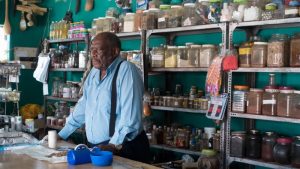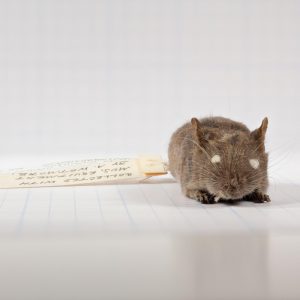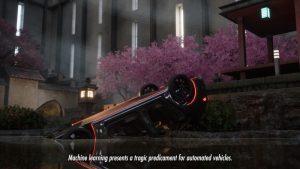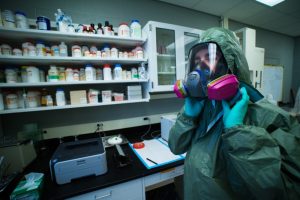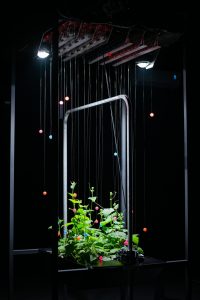Acoustic Botany, by David Benqué, extracts Synthetic Biology and Genetic Engineering from the usual context of health care, food and environment and examines instead the role they could play in the sphere of culture and entertainment.
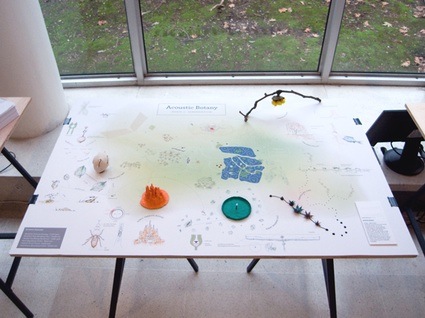 Acoustic Botany, the project for a “genetically engineered sound garden”, seeks to find new ways of imagining the nature of tomorrow (will we still call it ‘nature’?), where engineered species of plants, insects and animals interact within a composed ecosystem and create a new form of musical performance.
Acoustic Botany, the project for a “genetically engineered sound garden”, seeks to find new ways of imagining the nature of tomorrow (will we still call it ‘nature’?), where engineered species of plants, insects and animals interact within a composed ecosystem and create a new form of musical performance.
Benqué visited the Plant Sciences department in Cambridge, and researched botany in his own to find existing species from which to extrapolate, and the ideas for this work in progress developed from there. A few examples:
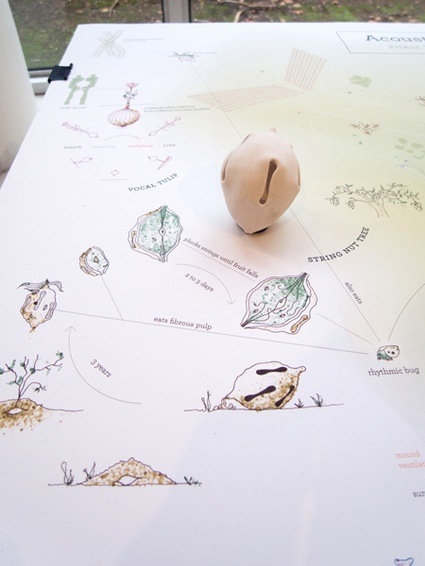 String Nut Tree
String Nut Tree
String Nut contains inside a fibrous pulp, which is eaten away by bugs engineered to chew in rhythm. They enter the fruit by the holes in the shell and remain inside until they have eating everything but the few stronger fibers. Left standing inside an empty shell, the fibers are like resonating strings. It should take a couple of days until the remaining strings finally snap and release the nut to the ground, where the seed can sprout.
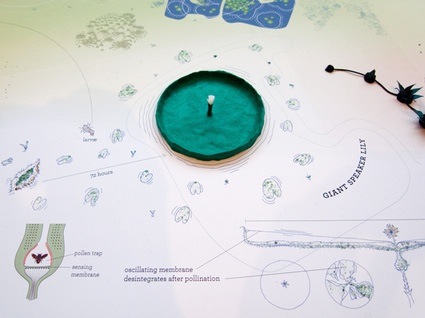 Giant Speaker Lilly
Giant Speaker Lilly
Giant Speaker Lily is inspired by an actual species. The flower at the center of the 3 meter leaf captures bugs to coat them in pollen for 24 hours before it dies. During that time, the plant amplifies the vibrations of the bug through a membrane tensed over the leaf, becoming a giant monotone speaker.
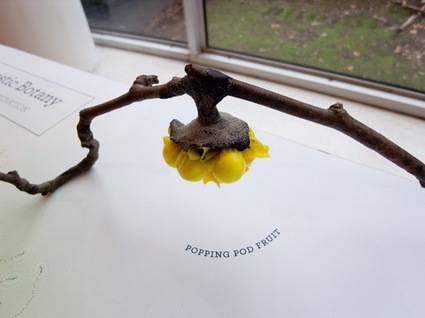 Popping Pod Fruit
Popping Pod Fruit
The Popping Pod Fruit is made from little capsules which fill with air and bacteria as they mature. When ready, the seed is dispersed by the explosion of the capsule. The popping season could be a carefully orchestrated over 2 months with periods of activity more intense than others.
I discovered Acoustic Botany at the Design Interactions work in progress show, Royal College of Art, London. I’m looking forward to see how his ideas will grow until the Summer show at the RCA: “This is indeed one of the projects I will be developing for the final show,” explains Benqué. “I aim to make it more of an experience, with sound and bigger models, to engage the audience more directly. I would also like to have a small book with diagrams and illustrations, going into more detail about the different species, as well as the ecosystem that ties them together.”
The designer imagines that the soundtrack would be more composed and harmonic than the nature sounds we know, but it wouldn’t be as controlled as ‘music’ either because of the unknown factors that plant growth almost inevitably brings.
All images courtesy David Benqué.
Also part of the show were The Gesundheit Radio and Crowbot Jenny.

